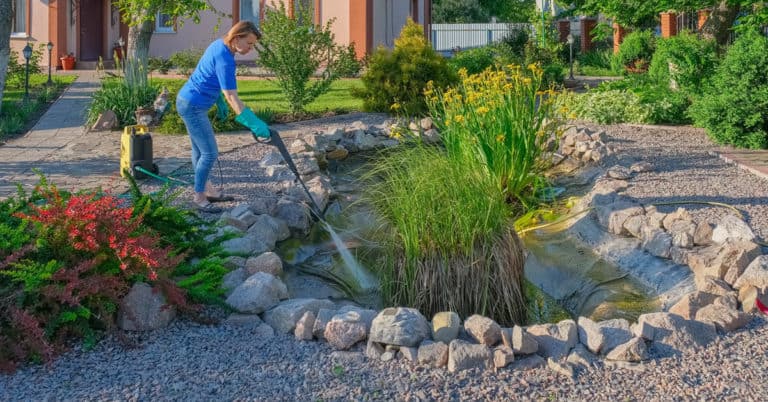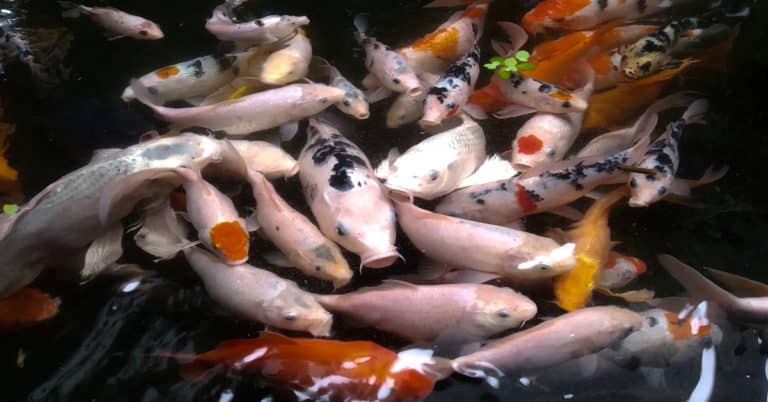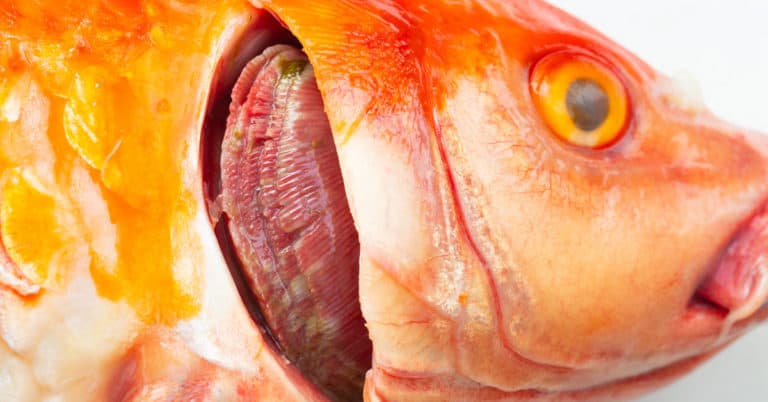Ornamental koi fish do not typically shed scales through natural means like other fish. If your koi is losing scales profusely, this is most likely a sign of an underlying bacterial infection, which can be dangerous not only to the subject fish but to others in the pond as well.
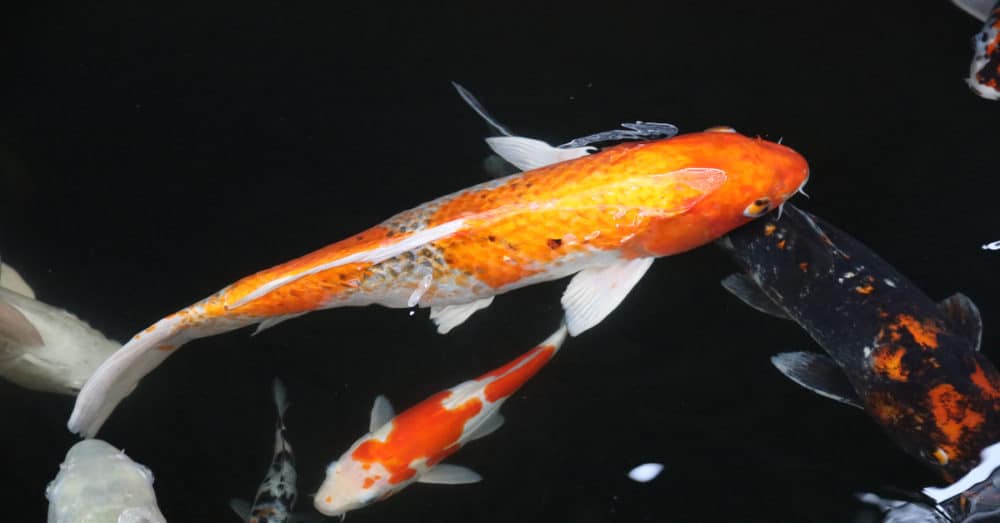
Luckily, there are many ways to combat and prevent this infection from happening. This can be done by treating the disease, quarantining the affected fish, or changing environmental conditions that could be causing the fish stress.
A koi fish that has experienced this bacterial infection will grow its scales back over time as long as the disease is completely cured.
We’ll talk about:
Some koi fish do shed scales naturally over time, but this is a slow and gradual process. Some varieties, such as the Doitsu Koi (also called a “mirror fish”), possess few scales and shed more regularly, especially larger scales near the dorsal fins.
However, if any of your koi are losing scales at a rapid rate, it is cause for concern. Here is the science behind scale loss in koi.
Koi fish and most other fish do not have advanced immune systems for combating disease. Instead, the epidermis of koi fish produces a slick slime coat called the cuticle.
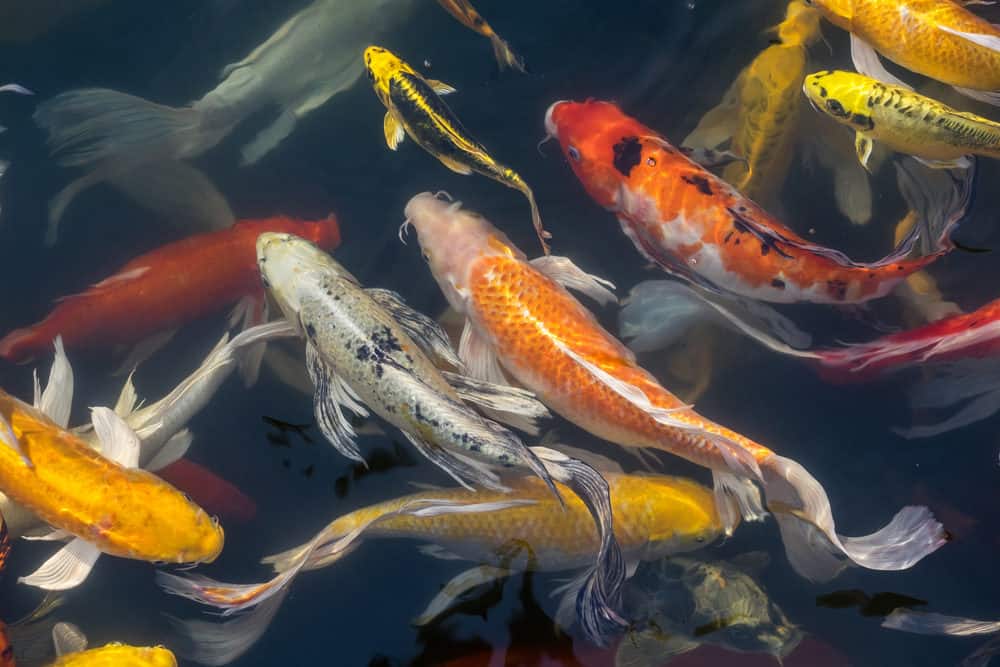
The cuticle is a fish’s primary line of defense against bacteria that contact the skin and typically serves to ward away diseases.
However, many factors can damage or weaken the cuticle, lowering a fish’s resistance to maladies. This usually happens because your koi is experiencing stress or illness.
Once the cuticle is damaged, it’s much easier for bacteria to cause infections on the skin, resulting in itchy ulcers and sores.
But disease alone isn’t enough to cause scale loss; instead, it’s the koi’s response to the discomfort caused by skin ulcers. Koi fish will rub their bodies against stones, glass walls, or other hard surfaces to ease their pain, during which their scales can fall off.
In turn, this can cause further damage to your koi fish since their scales help defend them against physical damages.
In addition, if a koi pond includes sharp rocks, the fish risk potentially hurting or killing themselves by rubbing against them. It’s essential to take action as soon as you notice that one of your koi lacks scales.
It should be evident when koi are experiencing scale loss. Koi will typically be unable to grow any scales back until the infection has run its course.
You may also notice fish scales floating on the water’s surface. Your koi’s colors may appear duller, and you may notice physical injuries from rubbing against surfaces.
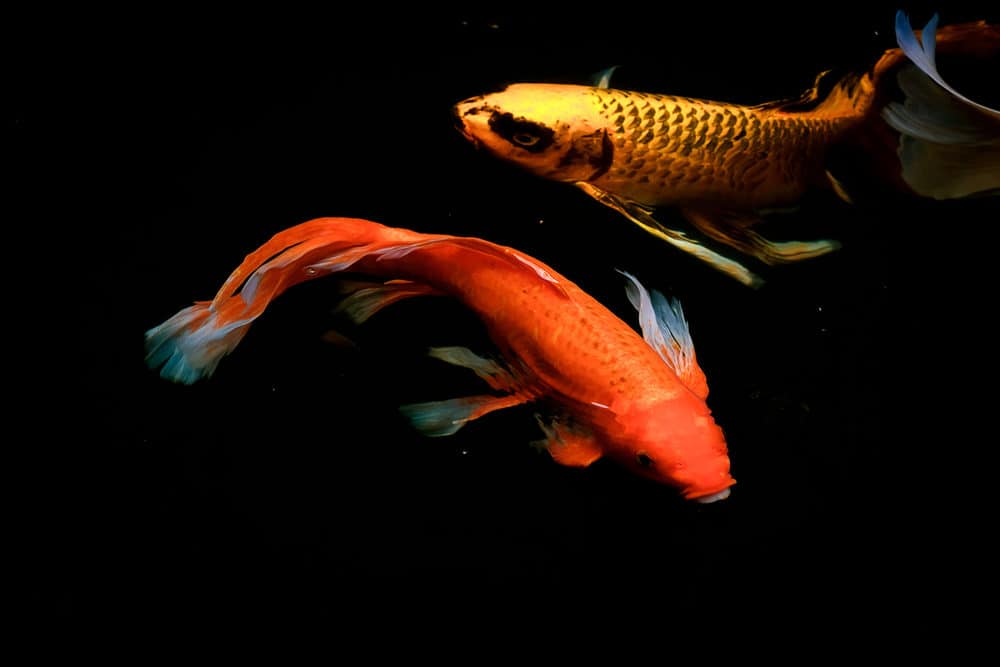
Other general signs of koi illness include loss of appetite, isolation from other fish, fin rot, dropsy, and more. In addition, if one fish is infected and is not separated from the others, it could cause the disease to spread, resulting in more symptoms and scale loss.
If you suspect that a koi is suffering from stress or illness, you’ll want to remove it from the pond for examination carefully. A koi sock or net is a gentle and effective tool for removing the koi in question.
The best preventative for lost scales is making sure that the koi’s environmental conditions are suitable. Doing so will lower koi stress, helping the fish stay resilient to diseases.
Koi fish are susceptible to environmental change. The best way to prevent stress and scale loss is by keeping the koi pond environment safe and stable.
Note that koi fish will always be a little stressed while adjusting to a new environment. However, be sure to keep the following conditions consistent and healthy.

Improper water conditions can drastically affect the health of pond fish. There are several factors beyond just pH to consider, including temperature, salinity, and ammonia levels.
A pH level between 6.8 and 8.2 is ideal, as well as oxygen levels between 5 mg/L and 18 mg/L.Your pond water temperature should be kept between 65 and 75 degrees Fahrenheit.
Salinity should be low, at a rate of only 1 kg of salt per 1,000 liters for consistent use, increasing slightly only for the treatment of some koi diseases. You can assess the salinity levels of your pond using a digital salt meter.
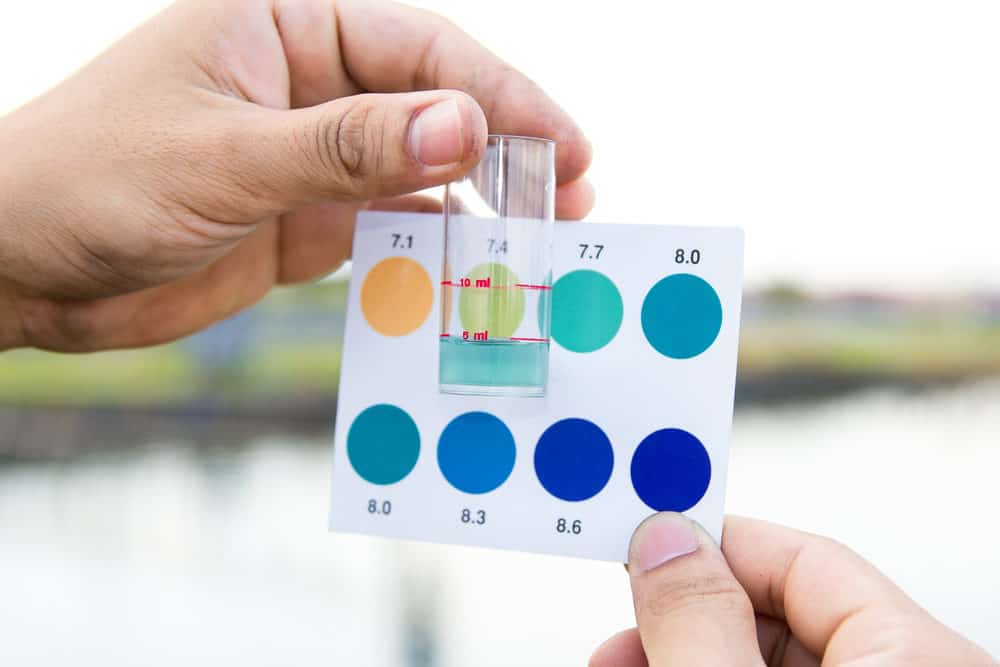
Ammonia is toxic to fish in high quantities. Because fish are regularly excreting ammonia, it is critical to have a proper filtration system to prevent buildup. Murky waters or an increase in algae are signs of high ammonia levels. Pond water test kits can be used to assess ammonia values. A healthy pond will have levels as close to zero as possible.
Test kits will also determine nitrate and nitrite levels. Nitrate is consumed by pond algae, making it difficult to reach toxic levels for fish. 20 to 60 parts per million is ideal for a pond, and fish are only at serious risk if nitrate levels are beyond 300 ppm.
Unlike nitrate, nitrite is harmful to koi even in small amounts, and levels should be kept as close to zero as possible. A reading of 0.25 parts per million or more could be dangerous to your fish.
Alkalinity levels are also worth considering, and most pond test kits will show this value. Alkalinity levels are affected by adding carbonate to ponds. A carbonate level anywhere between 75 and 200 mg/L is considered ideal for koi.
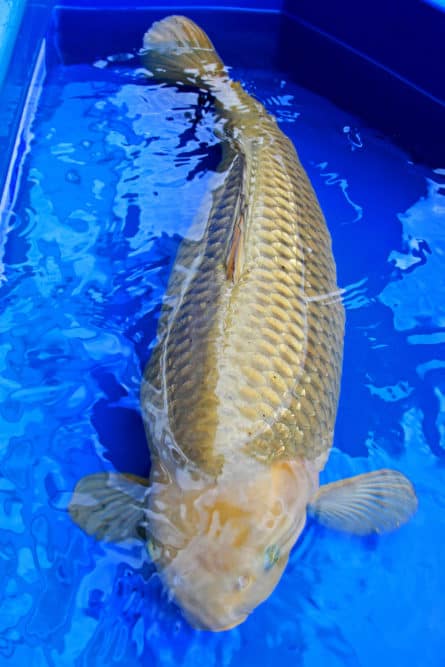
As a general rule of thumb, the quality of your pond’s aeration and filtration is tied to the water quality. Pond filter media and mechanical filters are both great options to keep too much ammonia from building up.
Oxygenated water helps beneficial bacteria break down ammonia and other waste. Stagnant or still water is a clear sign of poor filtration.
A fountain or waterfall is a great feature that both aerates pond water and looks attractive. Air pumps and aquatic plants also help to add oxygen to your pond water.
Koi are stressed by the frequent presence of predators, most notably herons and small mammals. A proper koi pond will be designed in a way that is inaccessible to these predators.
Make sure your koi pond is too deep for a heron to stand in and has overhangs too far from the water’s surface for mammals to take advantage of.
Keeping your koi pond in the shade or near trees may help to shield it from a heron’s aerial view. It may be worthwhile to invest in predator deterrents such as pond nets or electric fences.

You can also install features to give your koi shelter and hiding spots. These include aquatic plants like water lilies and hornworts, as well as artificial koi sheltering structures that go inside your pond.
It isn’t always obvious when your koi pond has frequent predators. Keep a close eye on your koi’s behavior and condition.
Some may have injuries, torn scales, or damaged fins, suggesting that a predator was near recently. It may be worthwhile to keep watch from afar or with a camera if you suspect that your pond is in danger.
Koi are resilient fish, but they can still be victims of parasites and illness. Most of these viruses are waterborne and can be prevented by ensuring the water quality is kept ideal.
However, illness can come from other sources, such as introducing a new, sick fish to your pond. Make sure each of your fish is treated and healthy before adding them to the pond.

Be on the lookout for slime coat deterioration, fin rot, and other symptoms. Dropsy may also occur, causing stomach swelling and bloating.
Overcrowding is also a health concern, allowing illnesses to spread more quickly. Make sure that your pond’s volume and size are suitable for the amount of koi you have.
Foods too high in carbohydrates or starch can lead to liver disease in koi, causing stress. Avoid feeding cereals, bread, or carb-heavy pellets to prevent health complications and opt for healthy koi foods.
Thankfully, there are many ways to treat koi with scale loss as long as you take action quickly. Before treating the affected koi, it’s always a good idea to temporarily quarantine it in a separate tank. This will stop any infections from spreading and making things worse.
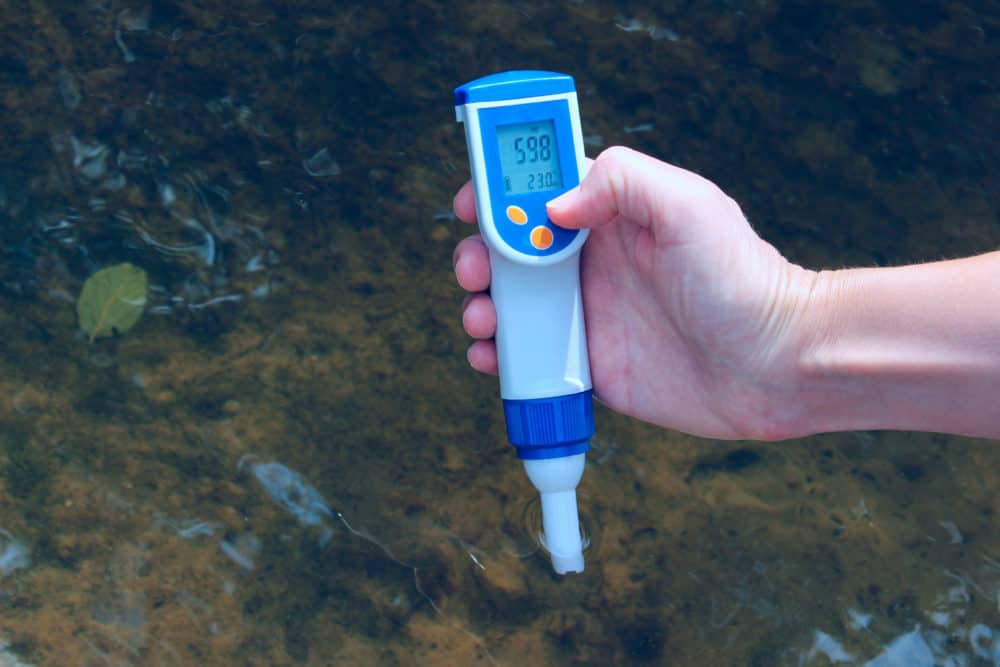
Before administering any koi medicines, make sure that your water quality is ideal. Each of the treatments listed functions best in environments with good water quality. In addition, most fish medicines work best when the weather is fair. Stormy weather can disturb the pond environment and make medicines less effective.
Potassium permanganate solutions and dips are a general fish treatment option that can eliminate bacteria, parasites, and fungus.
However, this chemical can also erode gill tissue and mucus if improperly used. Commercially sold doses will explain how much of the solution should be used per hundred liters of water.
Supaverm is a more koi-specific medicine that can be used to treat ponds. However, Supaverm is toxic to goldfish, so avoid using this with mixed ponds. Supaverm is most effective in ponds with salinity levels of at least 0.3%. After use, it should remain in your pond for about a month.

Antibiotic injections are a last resort. There is reportedly a small risk of death for any koi that receives an injection. However, these injections are considered the best chance for sick fish who will not eat and fail to improve after other treatments.
The injection process is very delicate, so I would heartily recommend enlisting the help of an experienced aquatic veterinarian. They will be able to assess which antibiotic is right for your koi and how to administer it.
If medicines are too expensive or unavailable, you should consider quarantining the affected fish. This won’t work as well as medicines, but raising the salt levels of your quarantining tank could help your koi recover. Increasing salinity levels up to 0.6% is a common practice to boost the natural recovery rates of fish.
Lastly, choosing high-quality fish food full of vitamins is a preventative measure that can improve your koi’s ability to fight infections and disease. A beneficial food has proteins, fats, ascorbic acid, and other materials that improve immune support in fish.
The chances are that if one of your koi is exhibiting signs of stress, your other koi will feel the same. A koi losing scales is a warning sign that something in your pond environment is not healthy for the fish.
I recommend moving the other fish to a safe tank or secondary pond for water treatment or other measures.
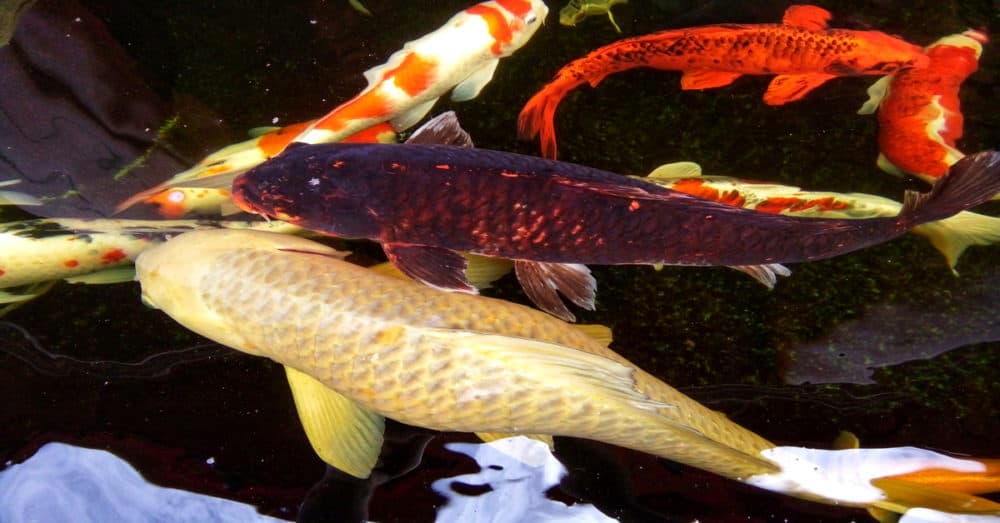
If you suspect that one of your koi is suffering from illness, avoid adding any new fish to the koi pond. This could amplify stress and make the pond situation worse, and you also run the risk of the new fish getting infected.
Stay vigilant and be on the lookout for pond-wide appetite loss, hiding, lethargy, and other symptoms.
If all else fails, quarantining the infected fish is a good safeguard for the other koi. A koi death can drastically increase stress levels in ponds, so moving an irrecoverable koi away before death is always advised.

